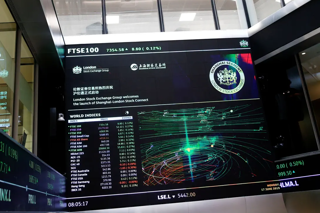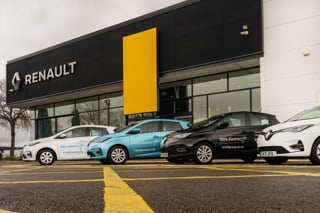We live in a changing world in respect of both the product and customer behaviour. Within a broadly similar business model, dealers around the world have shaped their business to suit the local market needs, or had it shaped for them by regulation and OEM pressure.
However, as we stand today, there are a number of common challenges faced by all dealers.
A changing world
From a product perspective, some of the key changes will be:
- Increased connectivity, car to host, but also car to car and car to infrastructure, which will enable new offers and customer benefits
- Autonomy, which is no longer just a pipe dream, with smaller steps such as auto braking and radar cruise control already becoming common
- Connectivity leads to telematics and remote diagnostics, which will have implications for aftersales demands
- Electrification and hybridisation, with a major impact on maintenance and repair
In parallel, customers’ attitudes are being shaped by the internet, and the data and services it provides access to. Experiences in other sectors, which have moved much faster than automotive, are transferring into the experience customers are looking for from the automotive industry, including:
- A greater focus on “instant gratification” with customers less willing to wait when they order a car or book a service appointment
- The 'always on' nature of consumers now makes them very demanding of convenience, expecting activities to fit around their own lives and be personal to themselves
- Less reliance on physical shopping, although they anticipate a continuing need for physical assets to support at least some parts of their journey
Consequently, we see five challenges faced by dealers globally
Facilities
OEM demands for new facility investments sometimes seem to ignore the need to make a financial return, and without consideration of whether the building will still meet the needs of customers in 5 or 10 years time.
Looking forward a decade, we see a substantial reduction in the number of main dealers, and an increase in the number of secondary points operating as satellites of the metro/urban dealers, located in high footfall locations.
As a result of the lower number of dealers in metro/urban areas, there will be a surplus of dealer property with downward pressure on values.
This will directly affect dealer balance sheets, with a secondary effect on the attitude of lenders.
This could lead to a panic to sell, and a rapidly descending spiral which we call the property “timebomb”.
The move online
Customers are moving online for research, and some for purchase.
Online research gives them improved level of knowledge on products and pricing when they come into the dealership, and they come fewer times than in the past.
In Europe over 50% have chosen a single brand before making any dealer visits. Most customers will have considered other brands during their research, but discarded these without any contact with any manufacturer or dealer.
The sale has been lost to those brands and their dealers without them even being aware that the customer was in the market.
Manufacturers and dealers need to work together to find ways to engage with customers during their online research phase, and encourage them to keep their brand in the customer’s consideration set up to the point where they start physical shopping.
Building a balanced business
In markets like the US or UK, dealers operate balanced businesses with significant contributions to profit from new car sales, used car sales and aftersales.
Aftersales still covers the majority of the fixed costs of the business.
In continental European markets, many dealers neglect the used car business, and their retention in aftersales varies widely. Chinese dealers are similarly focused on new car sales for revenue, on aftersales for profit, but few have any significant used car business, and F&I income remains small, though growing.
Such imbalances leave dealers exposed to downturns in the new car market and success of aftermarket independents in capturing market share.
Securing scale advantages
There is a trend in most markets towards consolidation.
However, scale itself does not give advantage.
In continental Europe and China, we have seen rapid development in the dealer group model, with 'hands off' holding company approaches changing towards more corporate models with central staffs picking up more responsibilities, and greater oversight of the detailed dealership KPIs, rather than just the bottom line results.
Some have brand-focused structures that allow strong alignment with each OEM brand represented, whilst at group level managing the portfolio and the related investments to deliver the best result from that overall portfolio.
In doing this, the groups may lose out some ultimate economies of scale, but they gain more through the commitment of their brand teams to achieving the best possible results for each brand.
The importance of people
Dealer staff and how they interact with customers is the most influential factor in the purchase decision.
However, most dealers struggle to get the right staff, and then have them behave in the right way.
Customers in Europe and China tell us that the quality of people in the dealership is the most important influence on their buying decision, yet it is arguably the area that is most neglected by both OEMs and dealers.
A more active approach is required to target the right sort of people for customer-facing roles, to ensure that their reward systems (fixed salary plus commissions/profit share – if any) incentivise the desired behaviours, induct them effectively and then continue to mentor and develop them throughout their employment.
Three key conclusions
The future for dealers is changing – do not stick your heads in the sand, but be aware of how changes will affect your business, get involved with your OEM partners to influence their responses, and adapt your own strategies to meet the future needs.
Your future will be as part of an omni-channel network – supporting some parts of the customer journey, whilst the OEM and other parties may be involved in other parts.
This will vary from customer to customer, and will not be consistent.
You need to understand what this means for you in terms of sharing and accessing customer and vehicle data, adapting systems and processes, and making investments in those channels that you are responsible for, in the context of the overall framework.
You need the right staff who can adapt to these new requirements and take your business forward. This will require new skills, different pay plans, different working patterns and different management styles, compared to the traditional model.
Author: Steve Young (pictured), managing director, International Car Distribution Programme



















Login to comment
Comments
No comments have been made yet.